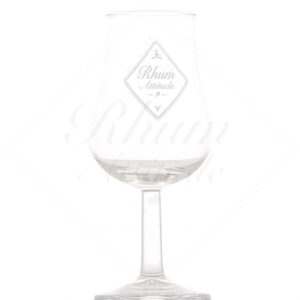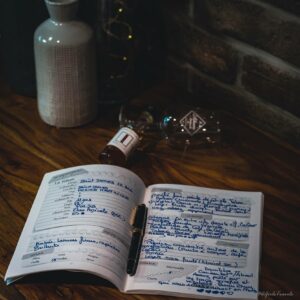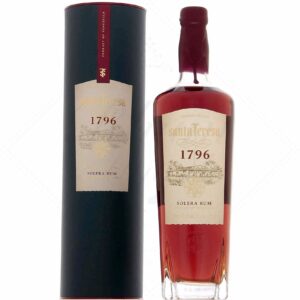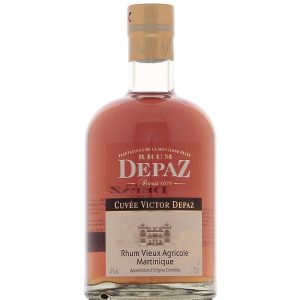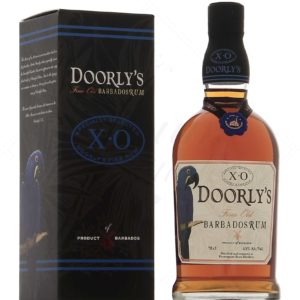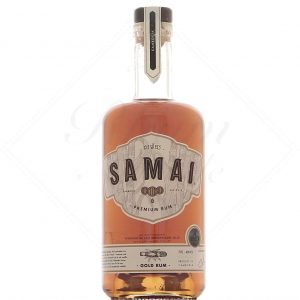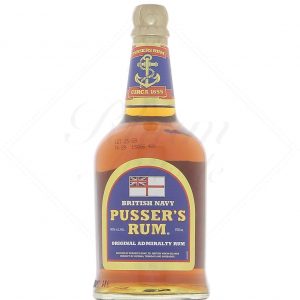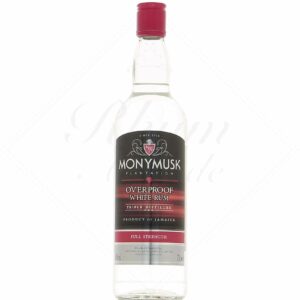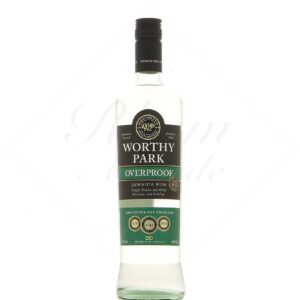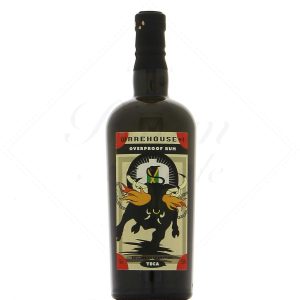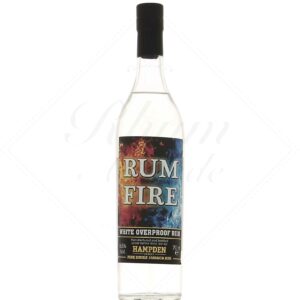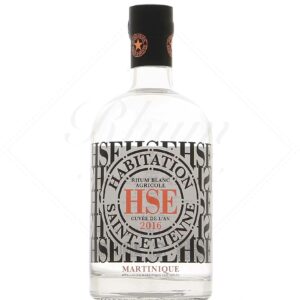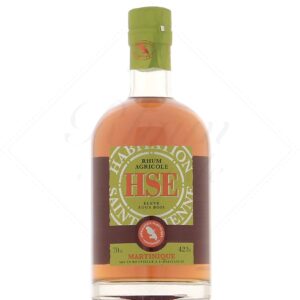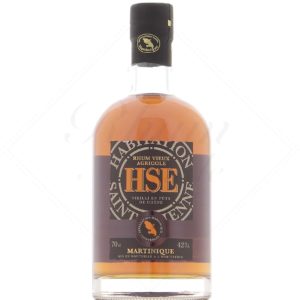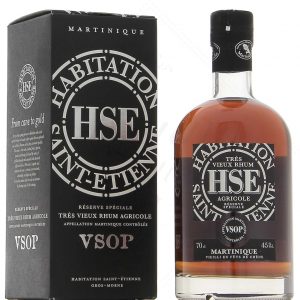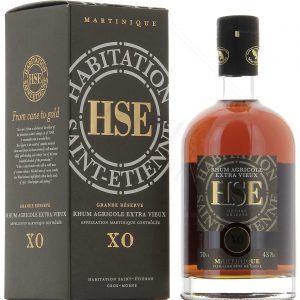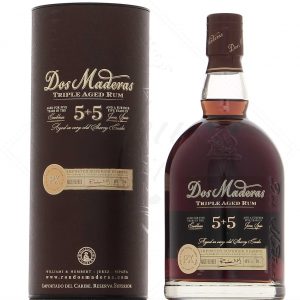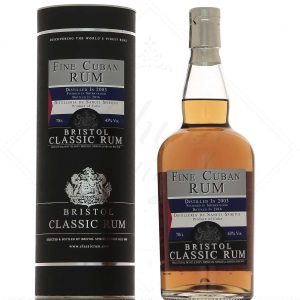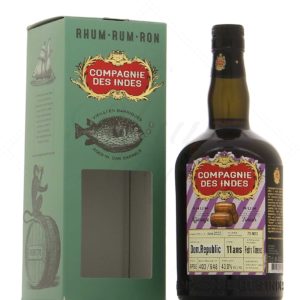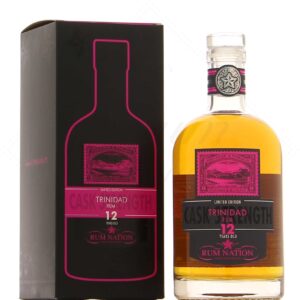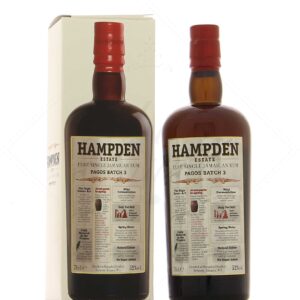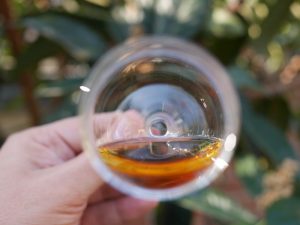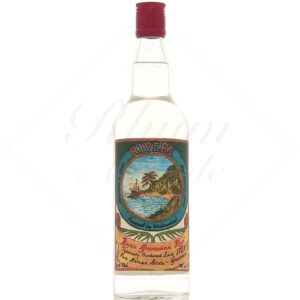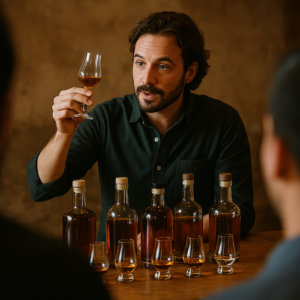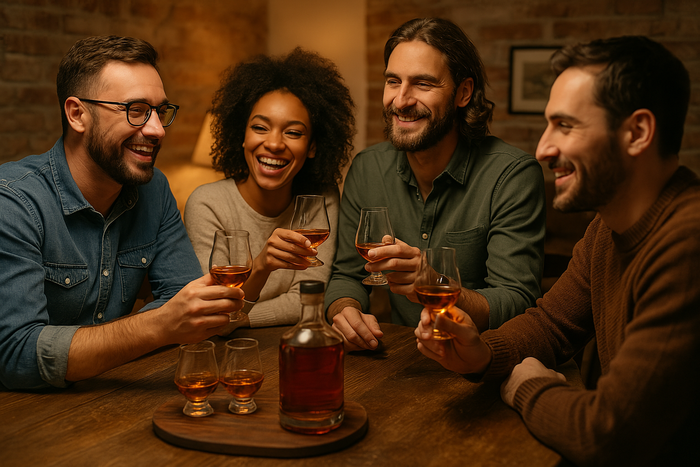
The essential equipment for a rum tasting
Choosing the right rum glasses
The tasting glass is an essential element, almost as important as the liquid it contains. To convince yourself, you can try pouring the same rum into a water tumbler, a wine glass, a shot glass, and a small tulip glass. You'll notice that the perceived aromas, the strength of the alcohol, and even the mouthfeel will be different.
The ideal glass is the tulip glass . Its wide base and narrow top allow the aromas to be retained inside, then gently released from the top while concentrating them. In a tall, straight, wide glass, the aromas and alcohol escape massively, and all the complexity and different nuances of the spirit disappear with it. The nose can also be stung by the alcohol, which further blocks the perception of aromas.
Additionally, higher quality glasses such as Riedel tulips offer a thinner rim (the edge of the glass where you place your lips), which allows you to capture the full subtlety of your rum's texture, whether it is oily, smooth, fine or fluid.
Prepare a tasting set (carafe, pipette, still water, etc.)
Unlike wine, rum doesn't need to be decanted. However, it may need aeration when the bottle is new and freshly opened. Don't hesitate to open your bottle in advance and leave it uncorked for at least an hour before tasting. This allows the more aggressive alcohols to diffuse, and also allows an aged rum to relax and "come out of its shell."
Water is also a taster's friend, and this in several ways: it is important to have water to keep yourself well hydrated, which is essential when consuming alcohol. A good glass of water allows you to quench your thirst between two rums, to dilute the alcohol to avoid the headache following a tasting that is a little too long, but also to reset the palate between two rums in order to fully grasp the contrasts and nuances.
To this end, you can also provide some rather neutral toast or crackers, which help reset the taste buds. A great Martinique cellar master also recommends rinsing the palate with a sip of light beer between each rum. It's a very effective technique, but use it sparingly! For the nose, which tires just as much as the palate, inhaling a small handful of coffee beans between two tastings has a stunning effect.
Coming back to water, it can finally be useful to slightly dilute a somewhat strong rum. You can therefore have a small pipette or a mini-syringe , filled with the most neutral water possible, to slip a few drops into the rum and observe how it reacts. This water modifies the balance of the liquid, rearranges the molecules and provokes new reactions. Two or three drops can help to attenuate an alcoholic sensation, give a more oily touch, open up a somewhat timid rum or bring out another range of aromas. An extremely interesting exercise!
Additional accessories (tasting notes, spittoons, etc.)
Taking tasting notes is a great way to practice, improve, and of course, keep track of your experiences. Writing down your impressions allows you to clarify your feelings, and you'll be amazed at how quickly your tasting skills evolve! We've designed a tasting notebook specifically for this purpose, where you can note down all the characteristics of the rum, break down your tasting, and even give it a score if you wish. The first few pages are also full of tips and advice to get you started, so you can enjoy dissecting your spirit without any hassle.
For those of you familiar with tasting events like Rhum Fest or Whisky Live, you know that it's also permissible to enjoy your spirits without necessarily swallowing them, especially when there are more than a dozen on the program. With the nose and just a few drops in the mouth, you can already get a very precise impression of a rum or whisky. The spittoon can then prove useful, as you can coat your palate and then spit out to enjoy the flavors while maintaining a responsible attitude, and thus be able to taste many rums.
Selecting rums for tasting
Choose a theme (origin, type of rum, aging, etc.)
Defining the theme and program of the tasting is certainly one of the most interesting steps! The first question to ask yourself is: who is the audience? Will we be in the company of knowledgeable amateurs, people who are discovering rum, tasters who are mainly expecting a festive aspect, or ultra-specialized geeks?
For a discovery tasting, it is often interesting to present the wide range offered by the world of rum, with rums from Latin America, the Caribbean, the Indian Ocean , South-East Asia, etc. In short, it is about touring the world of rums by covering origins and styles, from molasses to pure cane juice.
For more experienced enthusiasts, horizontal and vertical tastings are always appreciated. A horizontal tasting is a comparison between several rums of the same style, age, and/or origin. For example, a tasting of aged-in-wood rums from Martinique is an excellent way to discover the specific characteristics of the AOC.
A vertical tasting involves exploring a distillery in detail, starting with its white rum and progressing in age to the oldest in the range. This allows you to step into the cellar master's shoes, understanding what happens at each stage of the aging process.
The idea of tasting can also be to discover a country, a raw material, a tradition, and even for the most experienced, a type of distillation, barrel, variety of sugar cane, etc.; the list of themes is only limited by your imagination!
How many rums should be offered in a tasting?
Generally, 5 or 6 rums are enough to make a good tasting. Rum is a spirit that often has an alcohol content of over 40%, and even over 50% , so 2cl multiplied by 5 or 6 can be considered reasonable.
You can also be very careful and choose to serve only one centiliter. This is actually quite sufficient for a tasting, and it allows you to discover a wider range of dishes.
Examples of selections according to taster profiles
Here are some lineup ideas, based on the taster profiles present:
Discovery tasting, for novice tasters:
Santa Teresa 1796
Depaz Cuvée Victor
Doorly's XO
Samai Gold Rum
Pusser's Blue Label
You will find other selection ideas in our articles “What is the best rum?” and “What are the best rums for beginners?” .
Jamaican Overproof Horizontal Tasting, for enthusiasts seeking new horizons:
Wray & Nephew
Monymusk
Worthy Park White Overproof from Cane Juice
Warehouse #1 TECA Rolling Calf White
Hampden Rum Fire
Vertical tasting for HSE lovers:
2018 vintage
Raised-underwood
VO
VSOP
XO
Tasting for Geeks: PX's Barrel Finish:
Two Woods 5+5
Bristol Cuban Rum 2003 Sherry Finish
Compagnie des Indes Single Cask Ex Pedro Ximenez Dominican Republic
Rum Nation 12 years Trinidad Sherry Finish Cask Strength
Hampden Pagos 2024 Batch #3
The course of a rum tasting
The tasting order to follow
The choice of tasting order is made in several dimensions, which are age, alcohol content, and the third dimension which is perhaps the most important: aromatic concentration. The influence of one or other of these criteria can be so important that it can modify the order that one would establish intuitively. For example, one inevitably tells oneself that one will taste a young rum before a very old rum. This is often true, but now imagine having in front of you a respectable JM Millésime 2006 aged 15 years and a very young HGML Virgin Oak with 4 years on the clock. The aromatic madness of the young Hampden, as well as its high alcohol content, will undoubtedly make it come after the very old Martinique rum.
The sequence of rums in a tasting can sometimes be a puzzle (but a rather fun puzzle to solve!), but whatever happens, and especially if surprises can occur, we always learn something.
The importance of visual observation
Visuals are important, and it's nice to spend a few moments looking at the color of your rum. It's a first approach, a way to familiarize yourself with it, which can already reveal a few things to you. By gently passing it over the edges of the glass (gently, without shaking it, rather by turning the glass while holding it horizontally), the rum leaves a necklace of small pearls. The higher the alcohol content, the finer these pearls.
The rum then falls to the bottom of the glass, forming tears, which give you an idea of the texture of the rum, more or less viscous, concentrated, or else fluid and light.
The color ultimately has little importance, except for the pleasure of admiring its reflections, because it does not always indicate the age of the rum. Indeed; the age of the barrel used for aging has a lot to do with the final color of the rum, and the latter can also be colored using caramel.
Techniques for smelling and analyzing aromas
To begin with, you should know that everyone has their own set of aromas. Don't worry if you don't find the exact aromas described in a tasting note; this is perfectly normal, as each taster connects aromas to their experiences, their history, and their memories. It can also seem difficult to describe what you smell, to put it into words, but tasting several rums "at the same time" will show you that anyone can do it.
When we are faced with a rum on its own, aromas and sensations come to us, but we can have difficulty finding the right words. On the other hand, if we pour two rums into two glasses, going from one to the other, we begin to compare them by putting words more easily: "this one is spicier than that one", "this one is more iodized, it reminds me of the sea air", "this one smells more of wood than that one" etc.
Next, to make things easier for you and properly break down your rum, there are a few techniques. Start by laying your glass horizontally. The lighter aromas (flowers, spices , and fresh fruit) escape from the top of the opening, and the heavier ones (very ripe fruit, leather, caramel) from the bottom. The more aromatic the rum, the more you'll be able to find "layers" of aromas in different places. Rum is divided into layers of aromas, so to speak, according to the weight of their molecules.
Don't swirl your glass like you would a wine, or you'll end up taking a big gulp of alcohol. Gently swirl it around the edges of the glass; the liquid that dries there will express a different range of aromas, often very rich. Finally, don't hesitate to take your time. Rum, and especially aged rum, evolves slowly in the glass, and its full complexity can sometimes unfold for hours.
The art of tasting in the mouth
On the palate, as on the nose, patience and contemplation are required. A tasting is also about pressing "pause" and removing yourself from your usual world. To calmly prepare your palate, simply take a few drops and coat your mouth. This already gives you a good overview of the rum, its aromas, and its power. Then, you can take a larger swig to appreciate the whole experience. You'll see that with this small initial precaution, you can discover powerful rums, cask strength for example, without any burn from the alcohol.
Just like with the nose, you don't aerate a spirit in the mouth like you would a wine, or you risk burning your taste buds. That would be a shame!
Accompaniments and food and rum pairings
What foods enhance rum?
If there is a king of food and rum pairings, it is chocolate. The combination works every time, with the rum melting the chocolate, magnifying its aromas, and the chocolate enriching the rum with its full-bodied flavors. But there are of course other interesting pairings, such as roasted or grilled exotic fruits, seafood (which go very well with white agricultural rum, and even more so with Trois Rivières Cuvée de l'Océan ), antipasti, Asian dishes in sauce, or even foie gras (impressive with a slightly sweet rum) or cheeses (which like to be accompanied by powerful rums like those from Jamaica).
Examples of pairings with chocolate, fruits and spices
Here are some examples of food and rum pairings that you can easily implement at home:
Why not try a local pairing, with a grand cru chocolate and a rum from the same region? We can think of a dark chocolate moelleux from Peru accompanied by a Rum Nation 8 ans Peruano , a dark chocolate mousse from Trinidad with our selection Rhum Attitude Trinidad TDL 2005 18 ans , or even a cocoa sorbet from Haiti accompanied by a Vieux Sajous 5 ans 2019 .
You can also enjoy pairing fruit with rum. You can either look for similarities by combining a Worthy Park Single Estate Reserve with banana bread, or an exotic fruit salad with a New Grove 10 Years Old Tradition , or you can let the fruit aromas explode with a salad accompanied by a white rum like River Antoine or a blend of old rums like Planteray Xaymaca .
Spices are a fine accompaniment to rum, and can be present from starter to dessert: why not start with smoked salmon marinated in herbs and spices, accompanied by a good Foursquare ?
For the main course, a little sweetness and exoticism, with Asian-style beef, soy sauce, ginger and lemongrass, accompanied by a La Hechicera . And finally for dessert, a gourmet rice pudding, with vanilla and cardamom and salted butter caramel, enhanced by an excellent ReimonenQ Vieux 7 ans Cœur de Chauffe .
Should we provide appetizers between each tasting?
Appetizers, similar to main courses, are definitely a good idea, but they must be treated with the same care. Bites and small portions are also perfect to accompany a tasting. We've already mentioned foie gras, which works very well with sweet rums. Dry-cured ham works extremely well with a peaty whisky , but also with a rum like Pusser's Gunpowder. Sushi goes well with white rhum agricole, O Reizinho blanc with a leek fondue, and Appleton 12-year-old with duck à l'orange. In short, have fun!
Tips for an optimal tasting experience
Adjust the room's atmosphere and temperature
A tasting is a special moment where you take the time to immerse yourself in the rum, analyze it, and share. So, make yourself comfortable, with several glasses per taster, so you can compare rums directly against each other. Ideally, the room should be at a room temperature, neither too cool nor too warm, and you should try to avoid odors coming from the kitchen that could overpower the aromas.
Respect the correct dosage and moderation
There's a golden rule for ensuring the tasting goes smoothly: drink more water than rum! A glass of water between each rum is ideal, not only for a short break, but also to prepare the palate for the next rum, but also to dilute the alcohol to avoid a headache the next day.
As for dosage, we talked about it a little earlier, 2cl is more than enough for a tasting of 5 or 6 rums. To give you an idea, 3cl of 40% alcohol = 25cl of 5% beer = 12.5cl of 12% wine. Except that rum often exceeds 40%, so a tasting of 6 rums is approximately equivalent to 3 pints of beer or 1 bottle of wine. Even over a long evening, with a meal, this remains a significant quantity of alcohol for one person, well beyond the quantity allowed for driving, and therefore should not be repeated too often.
Tasting is precisely about learning to drink for the pleasure of discovery, not for abuse. It's about quality over quantity.
Liven up the tasting with anecdotes and explanations
If you'd like to host your own tasting, congratulations! You're a true enthusiast, just like us. We encourage you to browse the site and take some notes on the pages dedicated to producing countries, distilleries, and brands. You can also explore our blog, discovering the history of sugarcane , for example, or educate yourself by browsing through the various books on the site.
Don't hesitate to prepare a small slideshow, and some additional tastings such as fresh cane, cane juice (found in exotic grocery stores) or molasses (found in organic stores).
You now have all the keys to a successful tasting, all that's left is to get started! Will you tell us about it?
